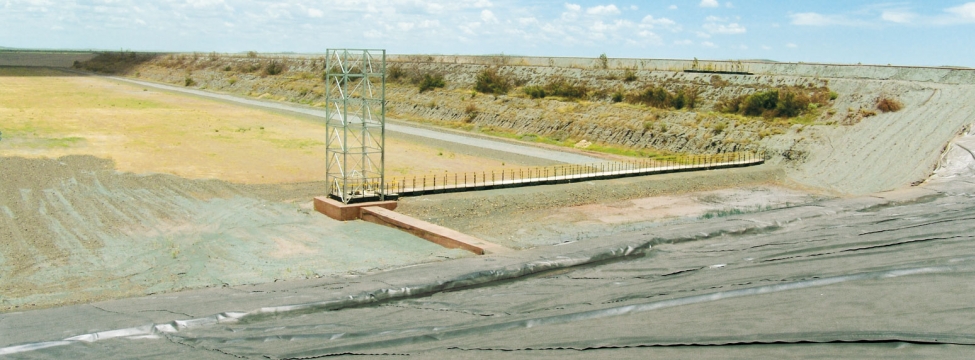To serve you better, our new website displays information specific to your location.
Please visit the site and bookmark it for future use.
Improved Water Consumption at the Sishen TSF Complex
The Sishen Iron Ore Mine is located approximately 50km southwest of Kuruman in the Northern Cape Province, in South Africa. This is an open pit mine and it is impractical for the tailings to be deposited in the workings. The existing Sishen tailings dam complex was built in the 1970s and is located to the north of the plant.
Currently, tailings material is being deposited on four individual tailings dams. Decant water from each tailings dam is transferred into two seepage sumps via gravity penstock decant systems and returned back to the Sishen plant. The water balance and water recovery system is not optimized and the dams are used only randomly to store storm rainfall and excess process water.
As part of the Sishen Expansion Project (SEP), a separate process plant will be established and the water recovery system will be improved. Tailings material will be disposed of in the cross area, in between the current four individual tailings dams. One leg of the cross area will be closed off at a time and filled with SEP tailings materials. The four legs of the cross area will be filled over approximately 10 to 12 years.
Once the cross area is filled to the level of the four individual tailings dams, the dams and filled area will be consolidated into one single dam with four operating paddocks as a means to improve water recovery. The method of tailings disposal and dam operation remains the same.
A return water dam will be constructed as part of the SEP. It will consist of an operating compartment capable of containing 5 days’ operational storage. Any runoff water from an extreme rainfall event (1:50-year 24-hour rainfall) will be contained on top of the tailings dams and decanted in the shortest period possible.
Weather Data: The mean annual precipitation for the Sishen area is approximately 354mm, which is extremely low. The majority of rainfall occurs during the summer months of January, February and March, whilst the lowest rainfall occurs during June, July and August.
Modified Deposition Strategy: The deposition strategy will focus on two distinct phases: namely, dam development before consolidation, which will involve the operation of five individual dams, and dam development after consolidation, with a consolidated dam divided into four paddocks.
During pre-consolidation, the four individual dams and the legs of the cross area will undergo partial consolidation in phases. Since the current four individual dams will necessarily increase in height as the cross area is filled up, the waste rock containment walls to be installed will also increase in height.
During post consolidation, both the Sishen and SEP plants will deposit tailings on the consolidated dam.
Improved Water Recovery: During future tailings dam operations, the emphasis will be on the recovery and return of water back to the plant, with these considerations:
• The pool on any leg of the cross area should not exceed 5 to 7% of the facility’s surface area. This will help reduce evaporation losses
• The return water dam has been designed to operate only as a water holding facility for operational purposes. No standby compartment to contain runoff from an extreme storm has been allowed for. The runoff on top of the tailings dams will be decanted in the shortest time possible. At all times, freeboard on the tailings dams should conform to legal requirements
After optimization measures and additions to the SEP plant are completed, water consumption at the complex should be reduced significantly.
Johan Boshoff: jboshoff@srk.co.za
|
You can download a PDF of the entire |
PDF A4
|
PDF Letter
|
|
|
|
Our newsletters focus on specific areas of interest to earth resource professionals and clients. Each is available as an Adobe Acrobat PDF file. If you don't already have Adobe's PDF reader, you can download it free.


